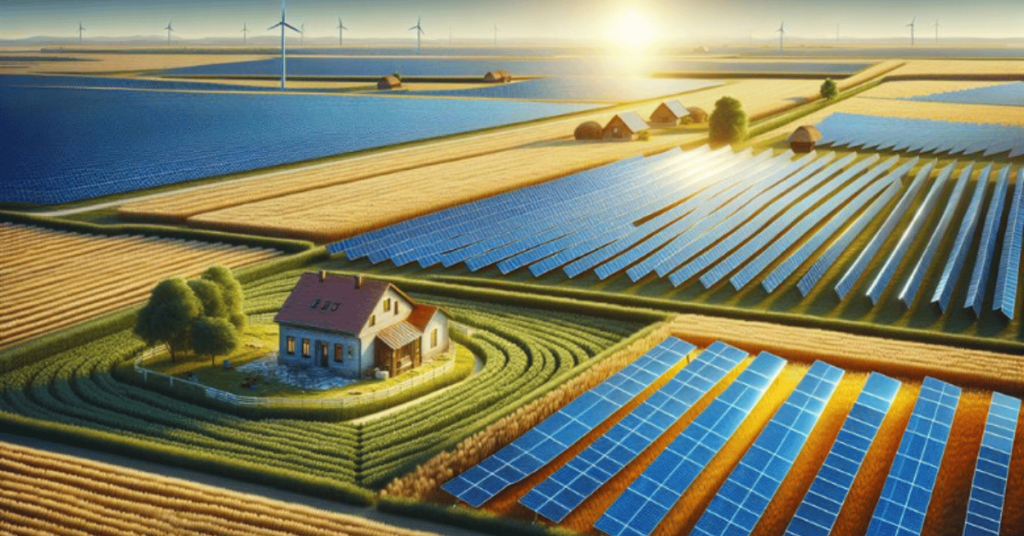Imagine a farmer in California who leased part of his land to a solar company and now enjoys a steady income while contributing to renewable energy. If you’re considering a similar arrangement, it’s essential to understand how solar land lease services work. You’ll find that these agreements outline key terms like duration, payment structure, and responsibilities, ensuring both parties benefit. But what are the specific advantages for you, and what challenges might you face? Let’s explore the intricacies of these leases, so you can make an informed decision about your land’s potential.
How Solar Land Leases Work
When you enter into a solar land lease, you’re essentially renting your land to a solar company for the installation and operation of solar panels, creating a mutually beneficial agreement. This arrangement involves a detailed lease agreement that outlines the terms and conditions, including the duration and financial implications.
You’ll receive regular lease payments, which can provide a steady income stream over the lease period, typically ranging from 20 to 30 years. Using your land for solar energy production can have significant financial benefits. The lease payments can be quite lucrative compared to traditional agricultural uses, especially if the land isn’t being fully utilized.
This can be a game-changer for landowners looking for additional revenue streams without substantial upfront investment. Moreover, the environmental impact of solar land leases is profound. By allowing your land to be used for solar energy, you’re contributing to the generation of clean, renewable energy.
This helps reduce greenhouse gas emissions and dependence on fossil fuels, aligning with broader environmental goals. It’s a strategic way to use your land that benefits both your financial standing and the planet.
Key Terms and Conditions
Understanding the key terms and conditions in a solar land lease is essential to ensuring a beneficial and transparent agreement for both parties. When you enter lease negotiations, it’s crucial to clearly define the scope and duration of the lease. Typically, solar land leases last between 20 to 30 years, with some extending up to 50 years. Make sure both parties agree on the exact period and renewal terms to avoid future disputes.
Payment terms are another critical aspect. You’ll need to decide whether payments will be made as a lump sum, annually, or monthly. Analyzing the financial health of the leasing company can help you assess whether they can meet these payment terms consistently. Additionally, consider including escalation clauses that adjust payments based on inflation or other economic factors.
Don’t overlook responsibilities regarding land maintenance and environmental compliance. Specify who’s accountable for maintaining the land and handling any potential environmental impacts. Clear terms will prevent misunderstandings that could lead to costly legal battles.
Lastly, ensure both parties agree on the termination conditions. Outline the circumstances under which the lease can be terminated early, and the financial repercussions involved. By meticulously addressing these key terms, you can secure a fair and balanced solar land lease agreement.
Benefits of Leasing Land
Leasing your land for solar projects offers a lucrative opportunity to generate steady income while contributing to sustainable energy development. One of the primary financial advantages is the consistent revenue stream you’ll receive from leasing agreements, often outpacing traditional agricultural or commercial uses of land. With solar leases, payments are typically guaranteed over long periods, providing long term stability that’s rare in other industries.
Environmental benefits are another significant perk. By leasing your land for solar energy, you’re playing a key role in reducing carbon emissions and promoting renewable energy. This not only enhances your property’s environmental profile but also aligns you with broader global sustainability goals.
Moreover, you’ll retain substantial landowner control. Lease agreements can be tailored to fit your needs, ensuring that you maintain oversight of your property while benefiting financially. You can negotiate terms that allow for dual-use, such as continuing agricultural activities alongside solar panels.
Potential Challenges
Despite the numerous benefits, leasing land for solar projects can present some notable challenges that you should carefully consider. First and foremost, regulatory compliance can be complex and time-consuming. You’ll need to navigate a labyrinth of local, state, and federal regulations, which can vary significantly depending on your location. Non-compliance can result in hefty fines or even the termination of your lease agreement, so it’s crucial to stay informed and proactive.
Another hurdle is the negotiation process. Effective negotiation strategies are essential for securing favorable terms in your lease agreement. Factors like lease duration, payment structures, and responsibilities for maintenance must be thoroughly negotiated. Without a well-crafted strategy, you risk entering into a contract that may not fully meet your financial or operational expectations.
Additionally, potential environmental concerns and community opposition shouldn’t be overlooked. The installation of solar panels can sometimes lead to disputes over land use and environmental impact, requiring you to engage in community outreach and meticulous planning.
Addressing these challenges head-on with a comprehensive understanding of regulatory compliance and robust negotiation strategies will position you for a more successful and less stressful solar land lease experience.
Finding the Right Lease Partner
Finding the right lease partner is crucial for ensuring your solar project runs smoothly and meets all your expectations. First, look for a partner experienced in lease negotiation and well-versed in the nuances of solar energy projects. This expertise can make a significant difference in securing favorable terms and efficient processes. You’ll want someone who understands land use intricacies and can draft agreements that protect your interests while facilitating project success.
A strong partnership goes beyond just signing papers. It involves ongoing communication, transparency, and mutual benefits. Assess potential partners based on their track record and willingness to work collaboratively. Don’t hesitate to ask for references or case studies showcasing their previous successes.
Consider the financial stability and long-term vision of your potential lease partner. A financially robust partner is more likely to support your project through any hurdles and ensure compliance with all legal and environmental regulations.
Lastly, ensure that your lease agreements are comprehensive yet flexible enough to adapt to any future changes in project scope or regulations. A well-negotiated lease will safeguard your investment and pave the way for a successful, sustainable solar energy project.
Conclusion
Coincidentally, exploring solar land lease services might align perfectly with your goals of financial stability and environmental stewardship.
By understanding how these leases work and the key terms involved, you can make informed decisions that benefit both your wallet and the planet.
Sure, there are challenges, but finding the right lease partner can turn potential obstacles into opportunities.
After all, leasing your land for solar energy isn’t just smart; it’s a step toward a brighter, sustainable future.







